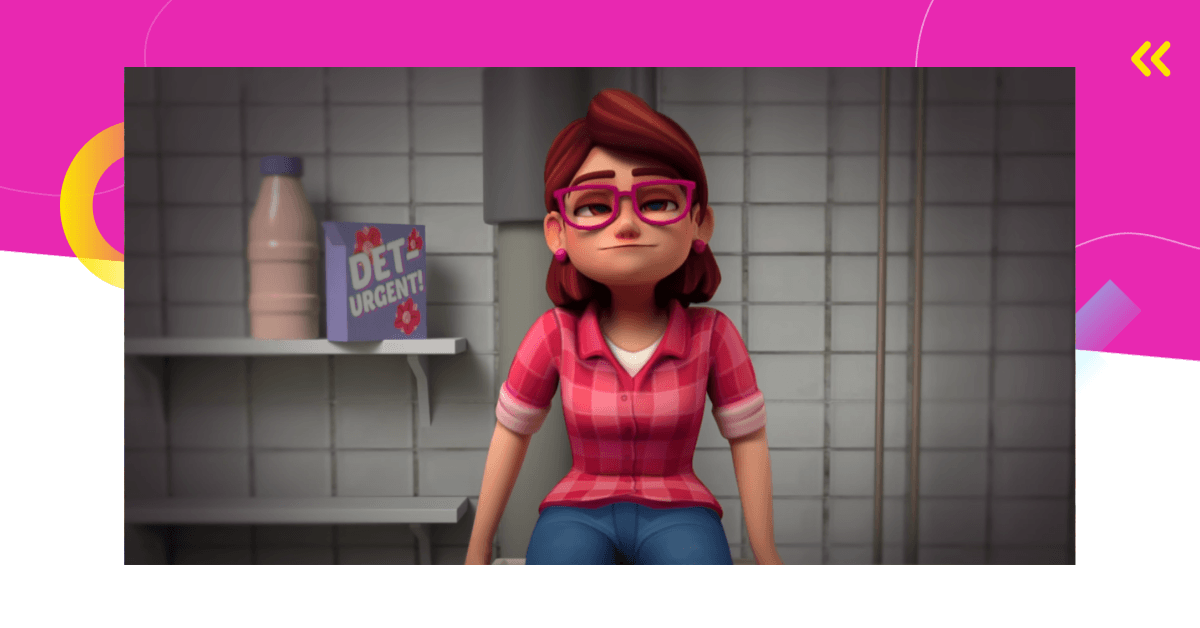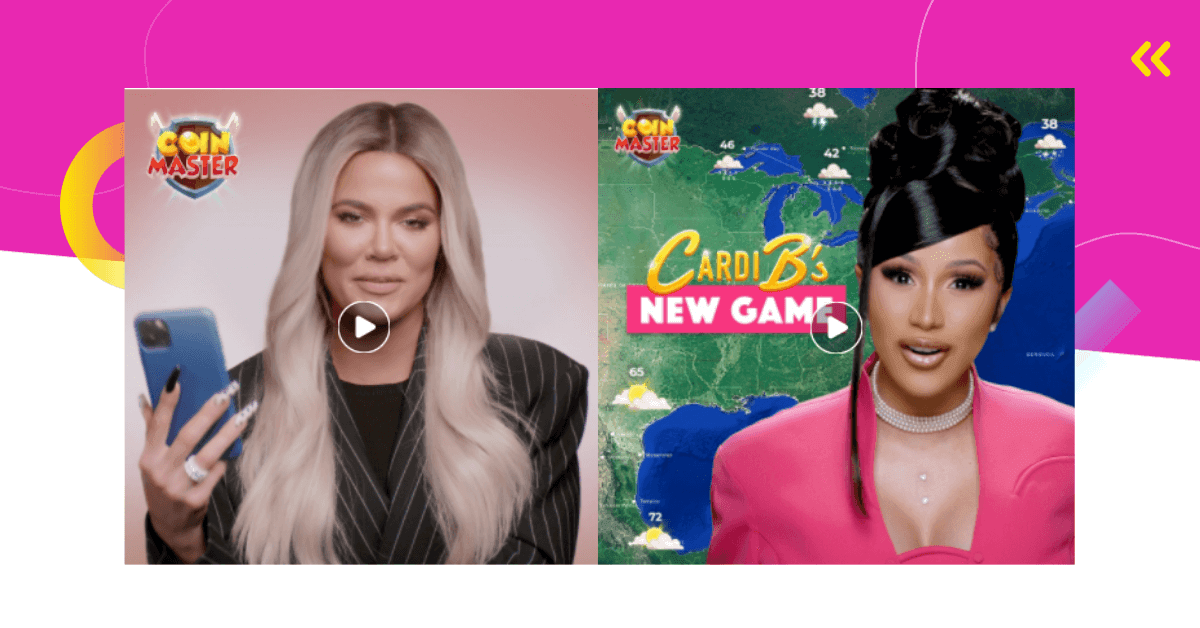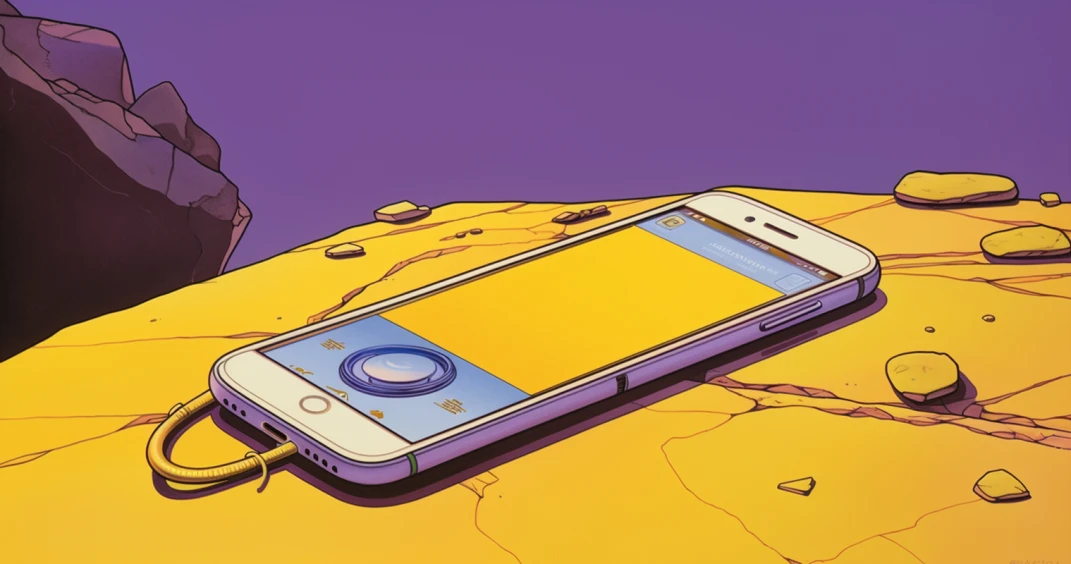Lily’s Garden ads have transformed the world of mobile game marketing. Some love it, some hate it, but nobody can look away.
That has, in turn, resulted in millions of downloads for the mobile game Lily’s Garden.
To learn more about its exceptional advertising strategy, read my analysis.
But first, here’s some basic info about the game.
Data source: AppMagic, a leading mobile intelligence platform. Get 3 days of free access to all AppMagic’s features, as well as 10% off, by clicking this link.
About Lily’s Garden
Published by the Danish developer Tactile Games, Lily’s Garden is a match-3 blast game. The goal of the game is to help Lily renovate her great-aunt’s garden. Along the way, Lily interacts with a cast of intriguing characters, which forms the game’s narrative meta layer.
According to AppMagic, Lily’s Garden has been downloaded 70 million times on both iOS and Android.
Furthermore, this puzzle game has earned more than $350 million so far.
This tells us Lily’s Garden has been wildly successful.
But the question is – how did it get there?
Let me explain.
Lily’s Garden Ads – Brilliant or Bizzare?
If the algorithms deemed you to be the target audience for Lily’s Garden, you might’ve encountered its ads on social media networks like Facebook or Instagram.
They’re the type of ad creatives that can’t be unseen.
Because of that, Lily’s Garden’s advertising strategy has made a big splash and quickly gone viral.
The best way to explain Lily’s Garden ads is by giving you a little taste.
Drama, Anyone?
In this viral video ad, Lily, a charming girl next door, finds out she’s pregnant. She’s excited to share the happy news with Blain, her handsome, ostentatiously dressed partner.
Upon hearing the news, Blaine spits out his coffee, and in the next scene, we see him riding off into the sunset.
Wow, that’s upsetting.
Naturally, Lily’s devastated. It makes you think who would do such a thing – leaving your girlfriend and your unborn baby?
But then, there’s another unexpected plot twist.
Turns out, Lily faked the positive pregnancy test to get rid of Blaine.
What?
Nobody saw that one coming.
What makes the advertising strategy for this game so unique are these types of dramatic story-based ads that pull viewers in with tales of romance, scandals, and heartbreak.
But this is just the tip of the iceberg.
Getting Away with Being Naughty
To say that these ad creatives are weird is an understatement; they’re downright bizarre.
For example, there’s a video ad titled Whose butt is it anyway? It’s starring Lily Roberts as Lily Roberts, and features a mystery person as random yoga bottoms.
Sexual innuendos are a staple of Lily’s Garden ads.
The goal is to shock viewers, grab their attention with something unexpected, and make Lily’s universe that much more enticing.
This holiday-themed video is titled Not the stuffing he expected…
Yup, you read that right.
In it, Lily’s mother is shamelessly flirting with Blaine, Lily’s boyfriend.
Not only that, but she ends up underneath the table – I’ll leave the rest up to your imagination.
Think you’ve seen everything?
Check out this one.
In this ad creative, titled NSFW, Lily has a life-changing experience with her washing machine.
The comment section for this ad is even more hilarious. One user said, “I guess Lily’s Garden needed watering.”
This video ad got more than 300k views on YouTube.
That’s quite a feat for a mobile game ad. It tells you one thing – people are loving these ads. Not only that, but they’re fully invested in the story.
Wondering how is this game getting away with such racy ads?
The key is following all the rules and regulations of a particular ad network but working around them. While you can’t show nudity and overtly sexual content, you can always insinuate and use double entendres.
Just like in the ad below.
There are two things you need to know about this ad:
- It’s titled Size Queen
- The ad copy for this ad on Facebook is, “👌🍆Lily at it again👌🍆”
Need I say more?

Building a Community on YouTube
While most of these ads run on social media networks such as Facebook and Instagram, they’re also compiled on the game’s official YouTube channel, titled Lily’s Garden Confusing Universe.
Each video tells a small part of the story but in no particular order, making it even more confusing. So much so, people are organizing them in order, trying to form a timeline – like in the video below.
This is another clue as to how invested people are in Lily’s story.
One user commented, “I feel like I just watched decades worth of soap operas condensed into 30 minutes.”
This is what makes Lily’s Garden videos so enticing. The amount of drama and plot twists found in these ads make soap operas and reality TV shows seem dull in comparison. But even though they’re strange and make you feel like you’re watching a soap opera, that’s precisely why you can’t take your eyes off them.
Once you are pulled into Lily’s universe, you start craving more.
Lily’s ads got so popular that famous YouTubers started reacting to them.
For example, a popular YouTube channel with almost 15 million subscribers, The Game Theorists, analyzed Lily’s Garden ads.
This tells you that Lily’s Garden ads are fascinating enough for people to discuss them and simultaneously try to dissect them. The more people talk about your game, the more brand awareness you get and, consequently, more downloads.

But What Does It Have to Do with Gardening?
Now, here’s a million-dollar question – what do a fake pregnancy test and yoga butts have to do with gardening and solving match-3 puzzles?
Well, not much.
As I mentioned, Lily’s Garden is a simple match-3 game, much like Playrix’s Gardenscapes.
Even though this game is primarily about renovating a garden by solving puzzles, as we’ve seen, its ads would make you think otherwise.
In other words, ads for Lily’s Garden have little to do with the actual gameplay. This is not an unfamiliar concept for mobile games, especially for the match-3 genre.
The goal, as always, is to grab people’s attention and make them interested in a simple puzzle game by any means necessary.
According to New York Magazine’s interview with Stella Sacco, the game’s writer, the ads were made by a different company. “All of those are all totally fabricated for, I guess, virality,” Sacco explained. “And to that degree, I would say that it worked,” she concluded.
However, to be fair, Lily’s Garden has a narrative meta layer that follows Lily.
The storylines players encounter in the game have some similar themes as Lily’s Garden ads, but are certainly not as outrageous.

Are People Drawn to Drama?
You’re probably wondering why Lily’s Garden is advertised in such a way? Why make it look like a soap opera?
Let me explain the psychology behind it.
Even though soap operas and reality TV shows are generally considered to be cringe, most people watch them, whether they want to admit it or not.
People are drawn to drama.
Let’s not forget about our society’s obsession with scandals, love, and sex. That’s why it makes sense to capitalize on ads that have shock value.
Furthermore, people like to escape their often mundane lives and constantly search for connections.
“People watch soaps to escape reality. They want to find somewhere they can go to escape their problems in reality, so they sit and watch soaps because they feel that they are part of the characters’ lives.” (Media Study)
Because Lily’s Garden ads use elements of such TV shows, people are drawn to it for the same reasons they’re drawn to a soap opera.
In other words, the motivation is the same.
Let’s take a moment to analyze the escapism factor.
As I’ve mentioned, studies show escaping reality is one of the main reasons people watch soap operas.
If we look at common reasons people play mobile games, according to Facebook Gaming, escapism is one of the big ones. Thus, it makes sense people would be attracted to a mobile game that advertises as a daytime soap opera.

Starving for Connection
But it’s not just about escapism.
Reality TV shows and soap operas also play out the most unbelievable scenarios that the majority of people don’t encounter in real life. It answers their “what if” questions.
According to the research, such shows also have the power to increase people’s empathy. People connect to on-screen characters and identify with their struggles and triumphs.
We see that with Lily’s Garden ads.
If you check out the YouTube comment section, it’s evident that people feel connected to Lily – they’re rooting for her.
Did you know that players can also connect with Lily on Instagram?
This is another part of the genius advertising strategy for this game. People comment on these Instagram posts as if Lily is an actual person.
For example, after it had been announced in an Instagram post that Lily got married, people congratulated her and expressed their joy for the happy couple.
That type of emotional connection is what every advertiser dreams of.
But who are these people, and why do they feel so invested in Lily’s story?
I explain the target audience for Lily’s Garden in the following section.

A Shift in Gamer Demographics
According to Statista, the majority of mobile gamers are women, 55% to be exact. Furthermore, the average age of a mobile gamer is 34.
This tells us that there has been a shift in gamer demographics.
Developers have taken notice and started developing mobile games that cater to women in this age group.
Lily’s Garden is one of them.
That’s not to say there aren’t any men playing this game. But if we consider its narrative structure, it’s mainly geared towards women.
However, it’s important to note that Lily’s Garden is not about cute animals and pink stuff, unlike most other games supposedly aimed at a female audience.
The themes are much more mature and serious.
This is what makes Lily’s Garden so successful.
The main character is a woman trying to navigate her complicated love life, which is something that many women can relate to. There are stories of betrayal, cheating, friendships, and relationships.
This is the type of content women over 30 are looking for. It makes sense to cater to older female players because they’re the largest audience for casual games.

Gameplay-Focused Ads
It’s important to note that not all Lily’s Garden ads are purely narrative-based. For example, if you look at Facebook ads for this game, many are more gameplay-focused and a bit more subdued than the ads I included at the beginning of the article.
They’re still based on a storyline and have some shock value, but they also include mini-games and puzzles.
Most commonly, we see stories about Lily finding out her partner is cheating. Also, Lily is usually found in difficult situations with her baby.
Generally, the goal is to help her get out of such situations by solving a puzzle.
Here’s an example of a Lily’s Garden Facebook ad that includes both the story and the mini-game.
Story + Mini-game
After finding out her partner is cheating, Lily seeks shelter from the cold winter and tries to keep warm in an abandoned house.
This is the main premise of this top-performing ad.
As with all Lily’s Garden ads, its purpose is to make people connect with the main character and get them emotionally invested in her story.
While the first part of the video is story-based, the second is a mini-game where the goal is to find logs to keep her warm.
There is a thermometer that shows the progress of this task.
As you might have guessed, the example player fails to keep Lily and her baby warm. This is a common trend in mobile game ads.
As I’ve mentioned before, the main target audience for most Lily’s Garden ads is women.
This one is no different, as it features a mother trying to overcome adversity.
However, we can go even deeper than that.
Because the first part of this video creative is story-based, it appeals to players motivated by a sense of escapism they get by playing mobile games. They love narrative-driven games that allow them to immerse themselves in another world.
Furthermore, because the ad features a hidden object type of mini-game, it also attracts players who enjoy a cognitive challenge.
In other words, this type of ad allows you to reach a broader audience, which is why it’s a smart idea to add a mini-game puzzle into a story-based ad.
Utilizing Influencer Marketing
Ads for Lily’s Garden are not just about storytelling – some utilize influencer marketing. A great example of that is ads from the new influencer campaign that started running in late 2022. These ads, featuring Lindsay Lohan, the popular actress, are already among the top-performing ads for this game.
In it, Lindsay reveals that she loves playing Lily’s Garden after a long day on the set, explains why she likes the game, and invites people to download it. These are the basics of influencer marketing – make it seem as though a celebrity is playing the game because that will make others want to play it.
You’ve probably noticed how simple this ad is – Lindsay is recording herself and it has the look of a casual Instagram video. In other words, the production value is quite low. I’ve been seeing similar celebrity ads for many different games. For example, Rick Hoffman advertising Royal Match in what seems to be a simple Cameo video.
Most likely, game studios are trying to lower the cost of influencer marketing campaigns as well as achieve a more casual/natural look.
If you can believe it, there are even some Lily’s Garden ads that include a match-3 puzzle, like the one above.
The storyline is still at the forefront and is strategically placed at the beginning of the ad in order to hook people in. It’s the tried-and-tested narrative about Lily getting dumped after finding out she’s pregnant.
However, the viewers are met with a choice – help Lily or ignore Lily.
Naturally, the former is chosen.
The ad then transitions into a match-3 puzzle where the goal is to give Lily a makeover by matching board pieces.
As you might have guessed, the makeover ends badly for Lily, who ends up looking a lot like her mother.
But, regardless of the different ad variations, the central part of all Lily’s Garden ads is always the story. This approach is obviously working incredibly well, so it makes sense to go all-in on it.
Following Trends
Finally, I wanted to include an example of a Lily’s Garden ad that follows established mobile game advertising trends. Even though this game’s advertising strategy is quite innovative, it still relies on tried and true video ad techniques.
I’m talking about the notorious mini-game ads, popularized by publishers like Playrix and adopted by countless other mobile game advertisers. Many players are vocal about how much they hate these types of ads, as they’re often misleading. Hate them or love them, they work. Do you really think big game publishers would pay huge sums of money to run ads that don’t convert users?
According to AppMagic, a leading mobile ad intelligence platform, this mini-game ad is one of the top-performing ads for this game – it has more than 800k impressions.
The mini-game is about getting water to a thirsty horse. Seems simple enough, right?
Well, that’s not what mobile game ads want you to believe. Three out of three attempts to get water to the horse are unsuccessful and the poor horse ends up drinking lava. This is standard for mini-game ads – they tend to consist of failed attempts, even though the tasks are painfully simple.
But even though it might irritate some people, it works for others, which is why including mini-game ads in your advertising strategy might not be such a bad idea.
Final Thoughts on Lily’s Garden
This has been a wild ride!
What are your thoughts on Lily’s Garden ads? Is this a genius advertising strategy or just another case of false advertising?
I’d love to hear your opinion!







Comments